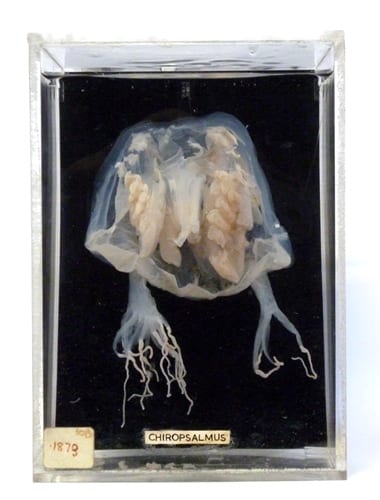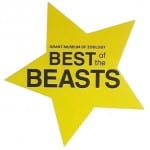Best of the Beasts
By Will J Richard, on 9 May 2016
There are about 7,000 animals or bits of animals on display in the museum and we know that can sometimes be a bit overwhelming. So to help some of our young (and young at heart) visitors navigate their way round the collection we’re proud to launch Best of the Beasts, our free new activity trail. And you get to learn some pretty extreme animal facts on the way round too. Ever wanted to know which of our 68,000 specimens is the…
Most venomous?

Box jellyfish are among the most venomous animals in the world. Their powerful venom attacks the heart, nervous system and skin of victims and can lead to a quick but painful death. Their tentacles can still sting if separated from the bell or after the jellyfish has died.
Or which specimen has the…
Largest tooth?

Mammoth (and elephant) tusks are very long front incisor teeth, which keep growing for the animal’s whole life. Mammoth tusks could reach up to 3.5 metres in length and both male and females had them.
If so when you’re next in the Grant Museum pick up a trail from the museum entrance and have a go. Learn which our heaviest, fastest and loudest specimens are and even which jar has the most animals in it. And there’s a word search. Everybody loves a word search!
Will Richard is the Visitor Services Assistant at the Grant Museum of Zoology
One Response to “Best of the Beasts”
- 1
 Close
Close



[…] folks! Will Richard here bringing you a record breaking specimen of the week. It is part of our Best of the Beasts trail and by the end of this blog I hope you’ll all see why. It’s […]